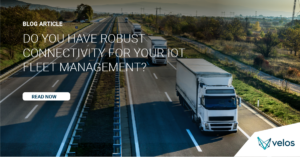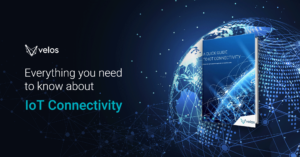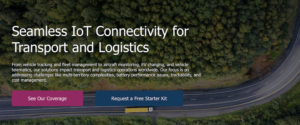A Comprehensive Guide to IoT in Transportation and Logistics
Imagine a fleet of vehicles scattered across the country, each carrying valuable cargo, yet you’re in the dark about their precise locations and conditions. This isn’t just frustrating. It’s a tangible threat to efficiency and customer satisfaction in the transportation and logistics industry.
Now, picture a solution that not only tracks every vehicle but also provides real-time data on cargo conditions, route efficiency, and more. This is where IoT connectivity for transportation and logistics steps in, turning these challenges into opportunities for unparalleled control and insight.
By integrating the Internet of Things (IoT) into your operations, you’re mastering the art of smart logistics. Drive into this IoT in transportation and logistics guide to discover how IoT is revolutionising the way we handle transportation and logistics by offering solutions to problems you face every day.
Content
- Revolutionising Transportation and Logistics with IoT
- Emerging IoT Trends in Transportation and Logistics
- IoT Use Cases in Logistics and Transportation
- Choosing the Right Network for Transportation and Logistics
- IoT Solution for Transportation and Logistics
- Benefits of IoT in Transportation and Logistics
- Navigating the Choice of an IoT Connectivity Partner
- Take the Leap into the Internet of Things with Velos IoT
Revolutionising Transportation and Logistics with IoT
IoT technology is significantly transforming the transportation and logistics industry. This technology enhances efficiency, safety, and cost-effectiveness by bringing a new era of innovation to an age-old industry.
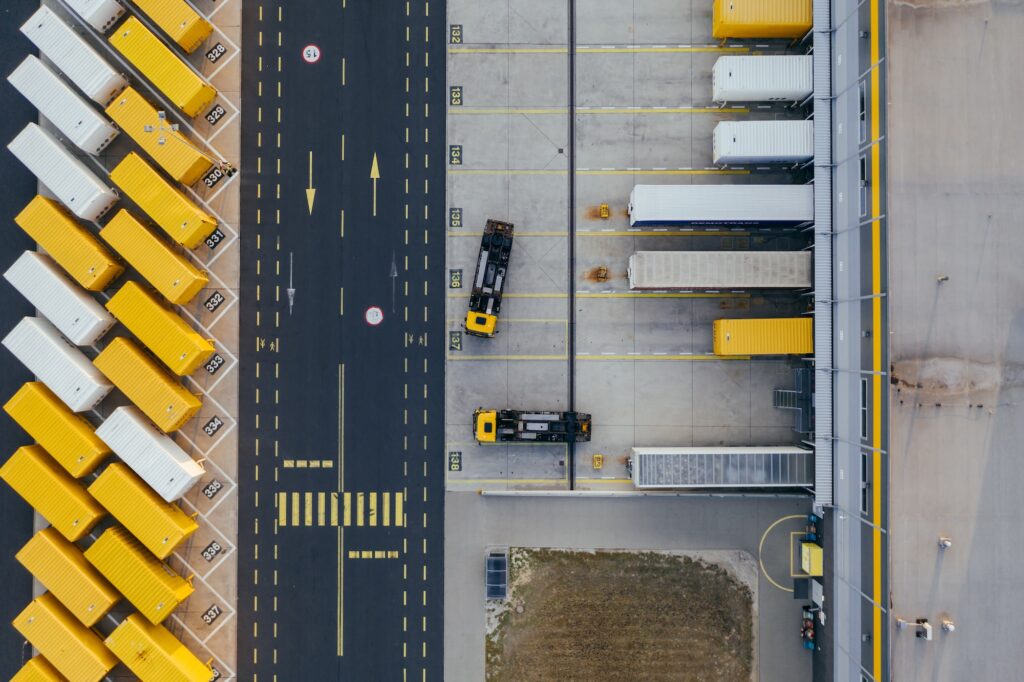
Real-Time Tracking and Fleet Management
A crucial aspect of IoT in transportation and logistics sector is real-time tracking. Gone are the days of uncertainty about the whereabouts of vehicles and cargo.
With IoT, companies can now track their fleets with pinpoint accuracy. This tracking is not limited to the location. It extends to monitoring vehicle health, fuel consumption, and driver behaviour.
Automated Inventory Management
IoT also plays a pivotal role in automated inventory management. Sensors and RFID tags make it possible to monitor stock levels in real-time. This can reduce the risk of overstocking or stockouts.
This system is particularly beneficial in warehousing, where it can automatically update inventory levels as goods are received or dispatched.
Route Optimisation and Fuel Efficiency
Transportation and logistics IoT solutions are not just enhancing existing processes. They are opening doors to new possibilities. For example, IoT can optimise route planning, taking into account:
- Traffic
- Weather conditions
- Vehicle capacity
Enhancing Safety in Transportation
Safety is another area where IoT is making significant strides. By monitoring driver behaviour and vehicle conditions, IoT systems can identify potential safety issues, like harsh braking or tyre problems, and alert the concerned personnel.
This capability is particularly important in long-distance transportation, where driver fatigue and vehicle wear and tear are common challenges.
Emerging IoT Trends in Transportation and Logistics
The transportation and logistics industry is on the cusp of a major transformation driven by the rapid advancement of IoT technologies. From self-driving vehicles to smart infrastructure, emerging trends are reshaping how goods are moved and managed across the globe.

Autonomous Vehicles
One of the most exciting emerging trends in the transportation and logistics sector is the development of autonomous vehicles. These self-driving vehicles are set to revolutionise the industry by offering increased efficiency and safety.
With advanced sensors and AI algorithms, autonomous vehicles can navigate without human intervention. This can reduce the risk of accidents caused by driver error.
This trend is not just limited to road transport. It’s also making waves in marine and air freight, with drones and self- navigating ships becoming more prevalent.
Smart Roads and Infrastructure
Another significant trend is the development of smart roads and infrastructure. These roads are equipped with IoT sensors that collect data on traffic patterns, weather conditions, and road surface quality.
This information can be used to:
• Optimise traffic flow
• Reduce congestion
• Enhance road safety
For instance, in Finland, smart road projects have been implemented where sensors embedded in the road surface provide real-time data to drivers and traffic management systems.
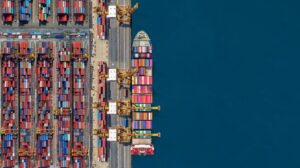
AI-Driven Logistics and Efficiency
AI-driven logistics is another area where IoT is making a big impact. Through the use of artificial intelligence, logistics companies can optimise routes, predict demand, and automate warehouse operations.
For example, AI can analyse historical data to predict future shipping needs, which allows companies to plan more effectively.
Data Privacy and Security Challenges
These advancements do come with their challenges. Data privacy and security are major concerns in IoT.
With an increasing amount of sensitive data being collected and transmitted, there is a heightened risk of cyberattacks and data breaches. Companies must invest in robust cybersecurity measures to protect this data and maintain customer trust.
Interoperability and Scalability Issues
Interoperability and scalability are other challenges in this space. As the number of IoT devices grows, ensuring they can communicate and work together seamlessly is crucial.
Additionally, solutions must be scalable to accommodate the growing needs of the transportation and logistics industry. Overcoming these challenges is essential for the full potential of IoT to be realised in this sector.
IoT Use Cases in Logistics and Transportation
In the fast-paced world of logistics and transportation, efficiency and reliability are key. This is where the Internet of Things steps in.
From real-time fleet management to sophisticated cargo monitoring, IoT in transportation and logistics use cases are not just about embracing new technology. They’re about revolutionising how businesses operate and deliver services.
Fleet Management
One of the standout applications of IoT in transportation and logistics is fleet management. By incorporating a vehicle tracking system, companies gain the ability to monitor their fleets in real-time.
This technology offers more than just location tracking. It provides insights into things like:
- Vehicle health
- Driver performance
- Fuel usage
For example, companies using IoT-based fleet management have reported significant reductions in fuel costs and improved vehicle maintenance. This results in longer vehicle lifespans and safer driving conditions.
Cargo Monitoring
Another key use case is cargo monitoring. Sensors placed within cargo containers can track the condition of goods in real-time, including temperature, humidity, and movement. This is particularly crucial for sensitive items like pharmaceuticals or perishable food products.
Additionally, these sensors enhance security by alerting about unauthorised access or potential theft, thus safeguarding valuable assets during transit.
You may be interested in reading:
The Power of IoT in Vehicle Tracking
Route Optimisation
Route optimisation is another area where IoT makes a significant impact. By analysing real-time traffic data, weather conditions, and vehicle capacity, IoT systems can determine the most efficient routes for delivery. This not only saves time but also reduces fuel consumption and emissions.
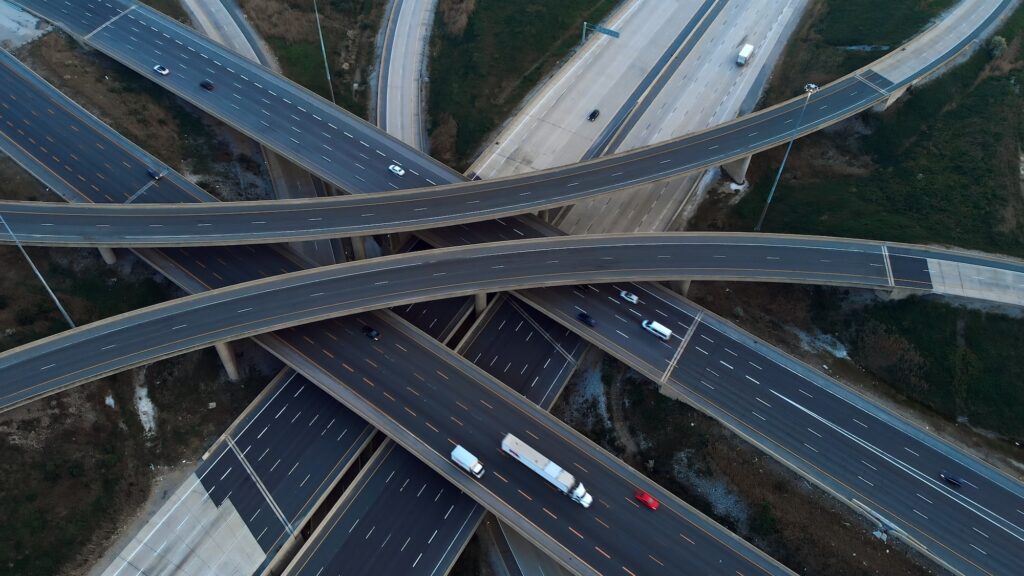
Inventory Management
IoT also plays a pivotal role in transforming inventory management. By using sensors and RFID tags, warehouses can automate the tracking of stock levels, locations, and movements. This leads to:
- More accurate inventory records
- Reduced errors
- Faster response times
For example, an IoT-enabled warehouse can automatically reorder stock when levels are low, eliminating the risk of overstocking or stockouts. This automation enhances efficiency and reduces the manpower needed for manual inventory checks.
Choosing the Right Network for Transportation and Logistics
Reliable network connectivity is the backbone of any successful IoT application in transportation and logistics. It ensures real-time data transmission, which is essential for tracking and managing the movement of manufactured goods.
A robust network minimises downtime and ensures continuous monitoring, which is crucial for maintaining the flow of operations and ensuring timely deliveries.
Cellular Networks
Cellular networks are a primary choice for IoT connectivity, especially in the logistics and transportation industry. They offer extensive coverage and can handle high-speed data transmission, which is essential for the real-time tracking and management of vehicles and goods.
For instance, 4G LTE networks provide the bandwidth and speed for live data analysis and tracking. This can prove invaluable in urban and well-developed areas.
The advent of 5G technology is set to further revolutionise this domain with its promise of faster speeds and lower latency. It enables more data-intensive applications and real-time decision-making.
Learn more about Cellular Networks by reading our Quick Guide to IoT Connectivity.
Low Power, Wide Area Networking
Low-power wide-area networks (LPWAN), such as LTE-M and NB-IoT, are specifically designed for IoT applications that require low bandwidth, long range, and long battery life. These networks are ideal for sensor-based monitoring, where frequent, small data packets are transmitted.
They are particularly relevant in logistics for tracking manufactured goods across long distances. LPWAN technologies offer a balance between coverage, power consumption, and operational costs. They are instrumental in scenarios where assets need to be monitored over vast areas with minimal power usage.
For transportation and logistics, where real-time tracking, seamless mobility, and higher data throughput are prioritized, LTE-M generally proves to be the more suitable choice. Its ability to handle high-speed data transmission and movement across locations without losing connectivity supports the dynamic nature of logistics operations, from fleet management to real-time vehicle tracking.
You may be interested in:
Connect LPWA: Global Experts in Low Power Wide Area Connectivity
Different LPWAN Technologies Explained
What are PSM nad eDRX features in LTE-M and NB-IoT
LTE-M vs NB-IoT Explained Further
Massive IoT Projects – CAT-M or NB-IoT
Satellite Connectivity
For logistics operations extending to remote or rural areas with limited cellular coverage, satellite connectivity is a viable option. It provides a broader coverage area to ensure that vehicles and assets in transit can be monitored even in the most isolated locations.
While satellite connectivity may offer slower data transfer rates than cellular networks, its ability to reach far-flung areas makes it indispensable for certain long-haul transportation routes.
Wi-Fi and Bluetooth
Wi-Fi and Bluetooth technologies are limited in range compared to cellular and satellite networks. They are, however, perfectly suited for short-range communication requirements within confined areas such as warehouses or distribution centres.
They enable quick data transfer between devices and central systems and facilitate efficient inventory management and local asset tracking. In warehouse settings, these technologies can efficiently handle tasks like:
- Inventory updates
- Equipment status monitoring
- Facilitating communication between various IoT devices within the facility
RFID
Radio Frequency Identification (RFID) technology plays a significant role in streamlining inventory management and asset tracking. RFID tags, when attached to products or equipment, provide a quick and efficient way of tracking items through the supply chain.
They are particularly useful in warehouse management as they allow for automatic identification and data capture of goods moving in and out.
![]()
Choosing the Right Network
Choosing the right network for IoT applications in transportation and logistics is not one- size-fits-all. It involves considering various factors. These can include:
- The geographic coverage required
- Data transmission needs
- Power constraints
- The specific nature of the goods being transported
For example, transporting high-value assets might necessitate a more secure and reliable network, like cellular or satellite. Monitoring the environmental conditions of goods over long distances, on the other hand, might be best served by LPWAN technologies.
Integrating Multiple Networks for Comprehensive Coverage
In practice, the most effective IoT solutions often involve integrating multiple network types to cover all aspects of the logistics and transportation processes. For instance, combining cellular networks for wide-area coverage and LPWAN for specific long-range, low-power applications can provide a comprehensive solution.
This multi-network approach ensures that all bases are covered, from high-speed data needs in urban areas to long-range, low-power requirements in remote locations.
IoT Solution for Transportation and Logistics
IoT connectivity solutions in the logistics sector are a complex blend of hardware, software, and network infrastructure. Each component plays a vital role in ensuring the seamless and secure operation of IoT systems.
Hardware
IoT systems’ hardware includes sensors, RFID tags, and GPS trackers. These devices are the eyes and ears of the IoT system, collecting valuable data from the field.
For example, sensors attached to a delivery truck can monitor everything from location to temperature to ensure that the goods are transported under optimal conditions. The hardware must be robust and reliable, as it often operates in challenging environments.
Software
Software is what makes sense of the data collected by the hardware. It includes the IoT platform that aggregates data from various sources, analyses it, and provides actionable insights.
For instance, a logistics company might use software to determine the most efficient route for delivery based on traffic patterns and vehicle availability. This software needs to be flexible and scalable, capable of handling the vast amounts of data generated by IoT devices.
Network Infrastructure
The network infrastructure connects the hardware to the software and allows for the transfer of data. This can include cellular networks, Wi-Fi, and other forms of wireless communication.
The choice of network depends on factors like:
• Coverage area
• Data requirements
• Power constraints
For example, a global logistics company might use a combination of cellular and satellite networks to ensure connectivity across all its routes.
Seamless and Secure Connectivity
In the logistics sector, it’s not just about collecting data. It’s about doing so securely and reliably.
IoT solutions must ensure data is transmitted securely to protect sensitive information about shipments and routes. This involves using advanced encryption methods and secure access protocols to guard against cyber threats.
Moreover, connectivity needs to be seamless. In the fast-moving world of logistics, there’s no room for downtime or data delays. IoT solutions must provide consistent and uninterrupted connectivity to ensure real-time tracking and monitoring of assets.
Benefits of IoT in Transportation and Logistics
The benefits of IoT in transportation and logistics are clear and impactful. From reducing operational costs to enhancing customer service, and from boosting operational efficiency to providing valuable data for decision-making, IoT is transforming the way the transportation and logistics industry operates.
 Cost Reduction
Cost Reduction
One of the most significant benefits of IoT in transportation and logistics is the substantial reduction in costs. IoT technologies enable more efficient route planning, which leads to lower fuel consumption and fewer vehicle maintenance issues.
For example, a logistics company might use IoT-based systems to optimise delivery routes, which can reduce fuel costs. Additionally, predictive maintenance facilitated by IoT can foresee vehicle breakdowns. This can save costs on unexpected repairs and downtime.
 Enhancing Customer Service
Enhancing Customer Service
IoT also plays a crucial role in improving customer service in the transportation and logistics industry. With real-time tracking capabilities, companies can provide customers with up-to-date information about their deliveries, including precise arrival times. This transparency builds trust and improves customer satisfaction.
 Boosting Operational Efficiency
Boosting Operational Efficiency
Operational efficiency is greatly enhanced through the use of IoT in logistics and transportation. IoT devices can automate many routine tasks, such as inventory management and vehicle checks. These can all free up staff to focus on more complex activities.
This automation leads to faster processing times and fewer errors.
 Data Analytics for Better Decision-Making
Data Analytics for Better Decision-Making
The data collected by IoT devices is a gold mine for logistics and transportation companies. Through data analytics, these companies can gain insights into patterns and trends that were previously invisible.
This information can guide better decision-making in inventory levels, staffing, and future investments. For example, by analysing data from IoT devices, a company might discover that certain routes are consistently slower, prompting them to explore alternative routes or solutions.
Navigating the Choice of an IoT Connectivity Partner
Selecting the right IoT connectivity partner is a crucial decision for businesses in the transportation and logistics industry. The partner you choose can significantly influence the efficiency, reliability, and overall success of your IoT implementations.
This section covers the key factors to consider when choosing an IoT connectivity partner and offers insights into making an informed decision that aligns with your business needs.
Understanding Your Specific Connectivity Needs
Before diving into the selection process, it’s essential to understand your specific connectivity needs. This includes identifying the types of devices you’ll be connecting, the data they will transmit, and the geographic areas they will cover.
For instance, a company operating globally will require a partner with extensive international network coverage, while a local business might need a partner with strong regional networks.
Evaluating Network Coverage and Reliability
Network coverage and reliability are paramount. A good IoT connectivity partner should offer extensive network coverage that aligns with your operational areas. They should also provide reliable connectivity to ensure uninterrupted data transmission.
For businesses involved in international logistics, choosing a partner with a wide range of roaming agreements is crucial to maintaining connectivity across borders.
Assessing Security Measures
In today’s digital age, security is a critical concern. The ideal IoT partner should offer robust security measures to protect your data from cyber threats.
This includes:
- End-to-end encryption
- Secure access controls
- Regular security updates
Ensure the partner you choose is proactive about security and compliant with relevant industry standards.
Understanding Support and Service Levels
Support and service levels are also crucial. Your IoT partner should offer responsive and reliable support to address any issues that arise. This includes:
- Technical support
- Troubleshooting
- Regular maintenance
A partner that provides proactive monitoring and alerts can be invaluable. They can help to prevent potential issues before they impact your operations.
Scalability and Flexibility
As your business grows, your IoT needs will likely evolve. Therefore, it’s important to select a partner that offers scalable and flexible solutions. This includes the ability to add more devices easily, change data plans, and adapt to new technologies.
A partner that can grow with your business will be a valuable asset in the long term. Cost-Effectiveness
While cost shouldn’t be the only factor in your decision, it’s certainly an important consideration. Compare the pricing models of different partners and consider the total cost of ownership, including any setup fees, monthly charges, and costs for additional services.
Remember, the cheapest option isn’t always the best in terms of value and reliability.
Industry Experience and Expertise
Lastly, consider the industry experience and expertise of the potential partner. A partner with a strong track record in the transportation and logistics industry will have a better understanding of your specific challenges and requirements. They can also provide valuable insights and advice based on their experience with other clients in your sector.
Take the Leap into the Internet of Things with Velos IoT
IoT connectivity for transportation and logistics is reshaping the industry by offering unprecedented efficiency, security, and control. From advanced vehicle tracking systems to seamless management of manufactured goods, the potential is immense.
Velos IoT stands at the vanguard of this transformation, offering cutting-edge transportation and logistics IoT solutions tailored to the sector’s unique demands. Discover how our expertise can streamline your long-distance transportation and logistics operations.
Don’t let your business lag in this technological revolution. Contact us today to unlock your enterprise’s full potential through IoT.
Want to know more? Get in touch.
Whether it is a global IoT deployment or a local project, our connectivity solutions are designed to give you the flexibility to scale your business. Contact us to find out how our experts can help
